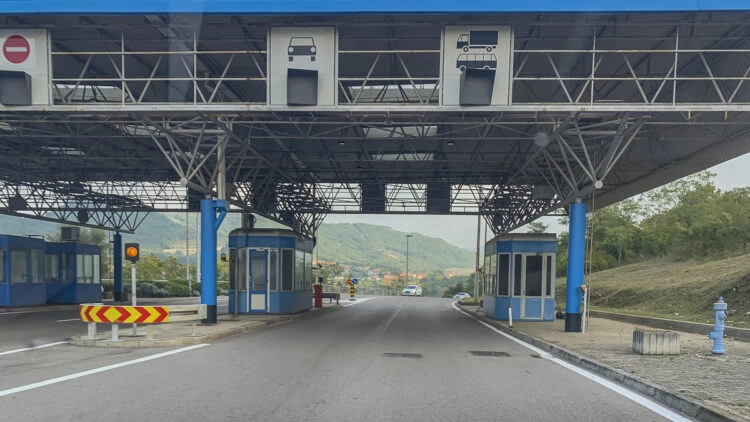It almost takes a law degree to find out how and where you are still allowed to travel between Germany, Austria, Italy, Slovenia and Croatia and what quarantine regulations await you in the destination country and when you return from a coronavirus risk area. Mind you, this is not exclusively about vacationers, but about yacht owners or real estate owners who want to check on their property abroad. Or people who work abroad and want to return to their families over Christmas and New Year’s Eve. For all these groups of people with their different interests, we are once again trying to explain the current situation in a simple and understandable way.
However, we recommend that you always follow the links as well, because the expiration date of the respective regulations ultimately also depends on the further spread of the coronavirus.
What applies in Italy with regard to the coronavirus?
Italy has a 14-day incidence 428.3 on 12/14/2020. Those entering will need proof of either a negative PCR or antigen test. The complete requirements are detailed on the Italian embassies’ homepages. In addition, however, there must be a valid reason that cannot be postponed.
At the express request of the Italian embassy, concerns about a yacht or real estate are not among the valid reasons for a visit to Italy. If you want to be on the safe side, you should clarify the issues in writing with the relevant authorities and the border police on the spot. However, as this is unlikely to be feasible in practice, the embassies strongly advise against tourist travel, especially as tightening of the situation from 21 December onwards cannot be ruled out, as Italy’s government wants to prevent increased travel over Christmas and New Year’s Eve in any case. Transit is possible at any time, border controls take place sporadically. Violations of the rapidly changing regulations are subject to fines, some of which are severe. Therefore, the same applies here: Before starting your trip, you should quickly get more information.
What is valid in Slovenia concerning the coronavirus?
At present, anyone who can present a negative PCR test for the coronavirus, which must not be older than 24 hours, is allowed to travel to Slovenia (14-day incidence 1006.0), as stated on the homepage of the Slovenian embassy in Berlin. Those who cannot present the PCR test must go into 10-day quarantine after entering Slovenia. The quarantine in Slovenia can be terminated prematurely if a PCR test is carried out on site on the fifth day, which documents a negative result for the COVID-19 pathogen. Transit through Slovenia, which may last a maximum of 12 hours, is possible at any time. Border controls take place.
What is the situation in Croatia regarding coronavirus?
With a 14-day incidence of 1208.8, Croatia is clearly the EU country most affected by coronavirus. The spread of the COVID-19 pandemic is mainly inland, and the coastal regions are rather less affected, with the exception of the metropolitan areas of Rijeka and Split. Especially in Istria, the situation seems to be relatively relaxed.
Those wishing to enter Croatia must be able to present a negative test, no older than 48 hours, otherwise they will be turned away at the border, where strict controls are now carried out. There is a theoretical possibility to make up for this test immediately after arrival in Croatia, but until the result you have to go into quarantine. Exceptions for foreign boat owners or real estate owners do not provide the latest regulations. By Christmas, a further tightening of the epidemiological regulations is to be expected, as the Croatian health system already seems to be overloaded. Here is the link to the current regulations. Transit is also possible in Croatia.
What is valid in Austria regarding the coronavirus?
For travelers returning to Austria, the following applies: according to the announcement of the Austrian federal government on December 2, 2020, entry from a risk country is to be determined from December 19, 2020, until presumably January 10, 2021, within the framework of an entry regulation yet to be published. Individuals entering from a high-risk area would then be required to spend 10 days in quarantine. After five days, a PCR test can be taken, allowing early termination of quarantine if the test result is negative. This regulation is valid until December 19, no quarantine was therefore required upon return from the Croatian areas of Brod-Posavina, Istria, Koprivnica-Križevci, Osijek-Baranja, Šibenik-Knin, Varaždin and Zadar.
After December 19, the situation changes, then a quarantine is generally required upon return from Croatia, which can be broken only after the 5th day by PCR or antigen test, as announced in the Austrian Federal Law Gazette.
What applies in Germany regarding coronavirus?
Travelers returning from coronavirus risk areas, i.e., virtually from all over Europe with only a few exceptions, must register on the portal www.einreiseanmeldung.de before re-entry and then receive a confirmation that must be presented during controls. In general, travelers returning to the country must spend ten days in quarantine, which can be ended at the earliest after the fifth day by presenting a negative test result. Ultimately, many powers regarding subsequent testing and quarantine regulations lie with the respective federal states, so it seems advisable to inquire with the health department responsible for the place of residence even before traveling to a risk area. The measures are initially limited until January 10, how it will continue thereafter depends on the epidemiological situation in Germany.
Corona measures shown are only a snapshot in time
We expressly point out that the measures presented here are a snapshot, which may change at any time as a result of more extensive regulations in the individual countries. In Italy and Croatia in particular, further tightening of the Corona measures is expected, and we will provide information on this on our homepage as soon as possible.













